Updated: 27-Jul-2021
Summarizing the aviation engine history of this brand, the company was founded during the Great War, in 1916 as a result of the merger of Rapp Motorenwerke (see) and Gustav Otto Flugmaschinenfabrik. They first used the name Bayerische Flugzeugwerke and eventually, in 1917, this was changed to "Bayerische Motoren Werke" (BMW). Its first activity was building aircraft engines.

"BMW logos"
-We show three of the brand's logos, which are slightly different and correspond to different periods. It has always been said that the interior squares corresponded to the effect of a spinning propeller, confirming its aeronautical origin.
-The mother factory has always been in Munich-Allach (Bayern).
-The first engines were water cooled and had 6 upright cylinders. Interestingly, the similarity with Benz, Austro-Daimler, Daimler, Mercedes, BASSE und Selve, Argus, etc. suggests that the German specifications were the same for all engines, except rotaries.
-The first models were I and II. The II (DIII) gave 185 CV.
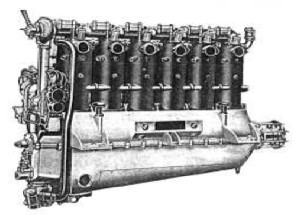
“BMW III”
-It had 19 liters of total displacement (cylinder 150 x 180 mm), and because the Germans had gasoline that was more resistant to detonation, there were versions of this engine with higher compression ratio than its competitors.
-Curiously, on land power was limited as the pilot could not open the throttle completely to full speed up to an altitude of about 2,000 meters.
-Other versions like the IIIA reached 220 CV of power.

"BMW IIIa"
-It seems that the BMW IIIa, shown in the photo below, was derived from the 160 CV Mercedes.
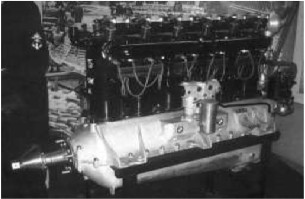
"BMW IIIa"
-According to an opinion that is quoted at the foot of the mentioned engine at the NASM, Daimler-Benz cornered almost the total engine production so that other brands did not evolve in the time that the various engines of the allies did.
-There came a time that Daimler-Benz designer, Max Friz, proposed to develop the 160 CV Mercedes, and the proposal was denied.
-Friz decided to switch over to BMW where he did develop this engine, which became the BMW IIIa.
-This engine appears in 1918 and gave 180 CV at 1,410 rpm, and as we see, the power went increasing up to 220 CV.
-With its identical anchor dimensions, it could replace previous engines, obtaining a minimum of 20 CV more power with a slight weight gain.
-Immediately, and as a result of the War, BMW switched over to build motorcycles, cars -the Austin Seven, under license-, and products for the railway industry (limitations of the Versailles Treaty).
-But in 1921 they started to build aircraft engines again, such as the BMW IV, larger than the III and giving 250 CV of power.
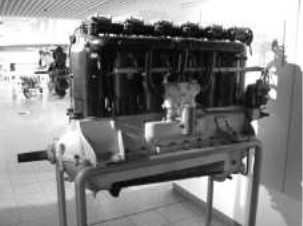
"BMW IV"
-The BMW V came out in 1926 and this was already a V-12 engine. It had two rows of IIIa cylinders and it gave between 360 and 420 CV.
-The BMW VI appeared in 1926 and was a V-12, but the cylinder rows were those from the IV, with the same cylinder size, and they delivered 440 CV with nearly 47 liters of total displacement.
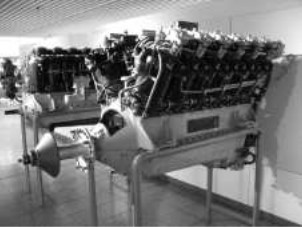
"BMW VI"

“BMW VI, with gear”
-There appeared different VI versions, gradually being increased in power, and almost simultaneously the VII model came out with mechanical supercharger. In fact, the VII was similar to the VI.
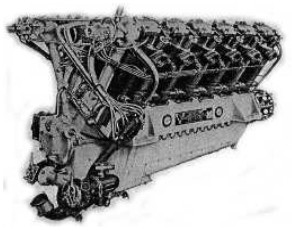
"BMW VI"
-The BMW VI, was offered with various powers according to each engine circumstance.
-The BMW VI that gave 600 CV at 1,500 rpm (940 propeller rpm) had low compression 5.5:1. The one that gave 640 CV at 1,530 rpm was compressed 6.3:1.
-The BMW VI Z gave 800 CV at 1,700 rpm compressing 7.3 to 1. The same compression for the standard VI giving 700 CV at 1,500 rpm.
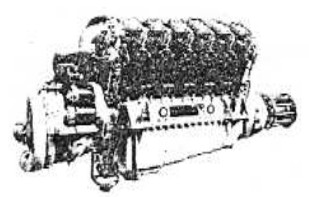
"BMW VII"
-But the Soviet Union, exhausted of the American "Liberty" performances (in the USSR M-5), bought licenses for the BMW VI and VII engines. These engines became known as M-17. And with the developments in that country, power exceeded 700 CV in the M-17F version, built by Mikulin.
-Another version was the AM-30 that was derived from the VI with “monoblock” construction.

"BMW VIII"
-The geared VIII model was one of the last ones before focusing on radial engine construction.
-It is said that one of the last water-cooled engines was the BMW VIII, but now a BMW IX has appeared.
-It is considered an improvement of the BMW VIIa, with the same formula of 12 cylinders in V.
-The BMW IXa version obtained a power of 715 CV at 1,650 rpm.
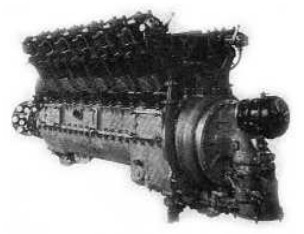
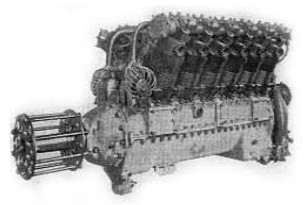
“Two BMW IX engines”
-Below, we find another view of a BMW IX with different accessories.
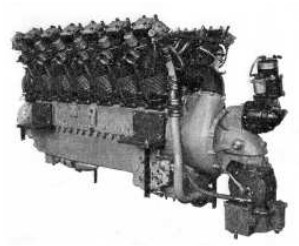
"BMW-IX"
-Now a curious picture of a BMW on an engine bed on a Rohrbach Roland airplane.
-There is no doubt that lattice structures are stronger than they look, but the wing anchor and engine traction components will certainly create cause for suffering to the observer.
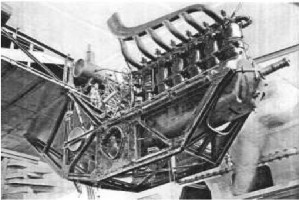
"Original engine bed of the Rohrbach"
-The 1930's were crossing years for this process, as in 1929, they were already working on the radial engine known as the "X", a five-cylinder radial, and the "Xa" with powers from 40 to 68 CV. The XI had 9 cylinders and gave 120 CV.
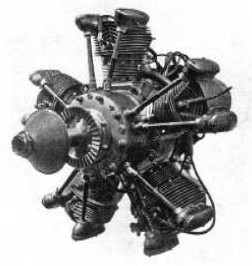
"BMW- X"
-The BMW X in the figure above shows a better photographic contrast.
-On the crankshaft plate for the propeller we can see striations or rather, small wedges around it, which are used to fix the wooden propeller.
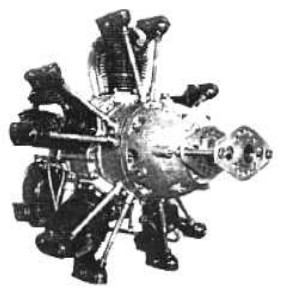
"Other BMW X"
-They also acquired the license to build the P&W "Hornet", of which they made different versions. This engine was known as the BMW 132.
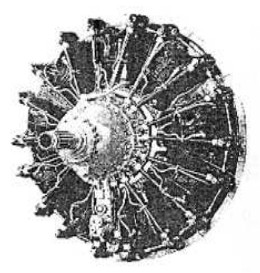
“BMW 132”
-These days the company enters the orbit of BFW (Bayerische FlugzeugWerke = Messerschmitt) and was renamed "BMW Flugmotorenbau GmBH".
-At the end of that decade and before WWII, they acquired "Bramo", in 1939.
-BRAMO stood for BRAndenburgische MOtorenwerke, and the resulting group was renamed "BMW Flugmotorenwerke GmBH".
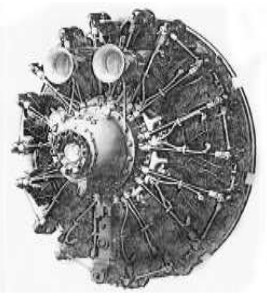
"BMW 132"
-The construction of the BMW 132 was, as we said, under license from P&W and specifically the "Hornet" model. This engine served to renew the Luftwaffe already as BMW 114 Lanova. It was a water-cooled, radial, Diesel engine based on the BMW 132. The radiators for the coolant were in between the cylinders.
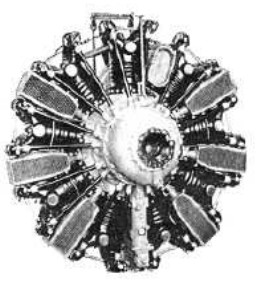
"BMW-Lanova"
-Following up with what we call the "100 series", around 1932 a different engine came out: an inverted V-12.
-It remained at prototype level and was known as the "BMW 116". This area -the one of the inverted V-12- was owned by Junkers Jumo and Daimler-Benz.
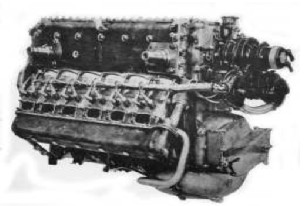
"BMW 116"
-The BMW 139 was an attempt to join two BMW 132 engines to participate in a ministerial contest for a more powerful engine in competition with Siemens-Bramo.
-The BMW 139 was tested in the latest aircraft models of the Luftwaffe, the FW-190 between them. The issue was that BMW already had the 801 ready, and it was this engine that won the competition.
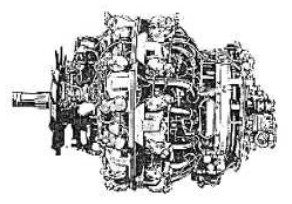
"BMW 801"
-After the merger of BMW with Bramo (Siemens-Bramo-Fafnir), the Bramo Sh-14 and Sh-22 that were provided by the latter, became a series that could be called "300".
-At BMW, the Sh-14A became known as the BMW 314e. But the most common engines of this series at that time were the 322 and especially the 323.
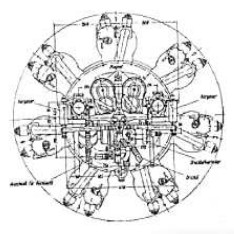
"Bramo Sh-14A"
-The 322 was a seven-cylinder radial and the 323 a nine-cylinder that is also known as "BMW-Bramo" or "Bramo-Fafnir".
-The 322 was less powerful, in the order of 670 to 750 CV (derived from Siemens-Bramo Sh-22), and the 323 was derived from the 322. The 323P reached 1,000 CV.
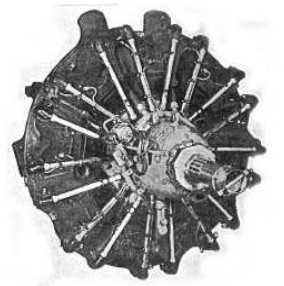
"BMW-323"
-A Bramo at the MAE, in their reserve stock, and perfectly restored is shown below.
-In a publication appears a two-row, 14-cylinder, radial, BMW-323R-2 engine that was installed in the Arado Ar-232B.
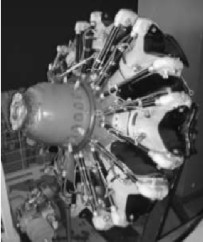
"Bramo with a JPX at its feet"
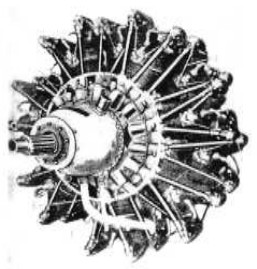
"BMW 323R-2"
-We have no more details than a picture of this engine.
-There was a trial on the FW-44J aircraft where, around 1938, a BMW-Bramo 325 was used with a "tubed" propeller.
-The trial was conducted by BMW technical director, Dr. Hermann Oestrich, who later would take care of the BMW 003 turbojets.
-This assembly was called BMW-Motorjet. The engine was a BMW-325 "Barium" moving a short four-bladed propeller, with total diameter of 1.5 meters. Another test was made with a BMW-329 engine that neither gave satisfactory results. The 329 was a Double Fafnir with 14 cylinders.
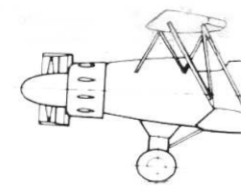
"BMW-325, tubed propeller"
-Returning to the model 801, one feature that identified these engines, which was visible in its most famous installation, the FW-190, was the cooling-air intake fan. This fan rotated at 3 times the speed of the VDM propeller just in front of it.
-Details can be seen clearly in the two views of the BMW 801 at the MAE's Engines Reserve Stock.


“Two views of the 801 at the MAE”
-The first 801, the -A, entered the production line in 1940 and already gave 1,600 CV. It was a high-performance, supercharged engine with 14 cylinders in two rows.

"BMW-801A"
-Arriving at the last product, the 801-E reached 2,000 CV.
-The BMW-801 was single control, that is, the pilot operated the throttle, propeller, and mixing with a single lever.
-Mixture control was most difficult to combine with the gas, and the propeller pitch.
-It had a Deckel 14-injection-piston fuel system with pressured gasoline, varying effective strokes.

"BMW-801A from the Dornier-217"
-The BMW-802 was an engine with the approach of the -801, but with 18 cylinders.

"BMW-802"
-It was in development during a long time, but no operational aircraft applications are known, although it was scheduled to be installed on the Ju-288 C-O. The power that the prototype achieved was 2400 CV.
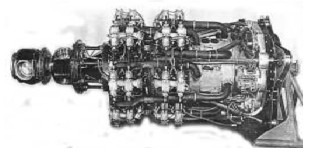
"BMW-803"
-In the search for higher powers BMW made the 803. Basically, it was joining two 801s "back" to "back", with a total of 28 cylinders. But it became a liquid-cooled engine, with the cylinders facing two by two, in instead of alternating them as is usual in this size of air-cooled radial engines (P&W R-4360, for example).
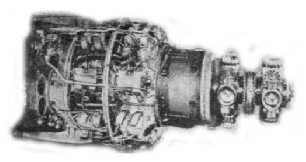
"BMW-803"
-The propellers were contra-rotating, the first one was driven by the front engine while the rear propeller was driven by seven transmission shafts passing between the cylinders towards the rear engine. It was a huge 4,000 CV engine.
-Having described most of the brand's piston engines until WWII, it is time to deal with the development of BMW's jet engines.
-Preliminary work began in 1934 and the first reactor, 003 (109-003) ran in 1940. The turbine program director remained Hermann Oestrich.
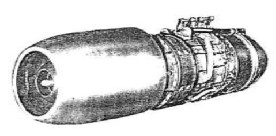
"P-3302, front view"
-The first BMW-003 engines had the factory name "P-3302", and the useful series were the V-11 to V-14. They were mounted on the Me-262's wings, together with a Jumo propeller engine on the nose. In the first test both 003 engines failed by their turbines after takeoff, and only the piston engine saved the situation.
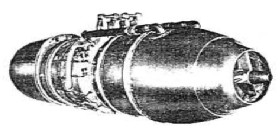
"P-3302, rear view"
-All faults were corrected in some very active programs until reaching the BMW-003 E-1, similar to the A-1 but with 30 seconds overpower at 920 Kgf. of thrust.

"Me-262 with Jumo"
-The BMW-003 engine had a 7-stage axial compressor, annular combustion chamber, and a single stage turbine.

"BMW-003 E-1"
-This can be seen in the diagram of a Japanese publication in later years.

"BMW-003A cross-section"
-At the central front cone there is a small horizontally-opposed, 2-cylinder, 2-stroke starter motor. This is the Riedel, which was started by a ring with a coiled rope as if it were the "outboard" engine of a boat.
-The ring was pulled by a person from the front of the engine, opposite the entrance.
-Maintenance technicians of aircraft and their engines also had to be skilled in working with "starters" of all kinds, as well as APUs, APPs and general accessories.

"Riedel"
-The Riedel was a so-called "over-squared" engine, ie, the piston diameter is larger than the stroke length.
-The BMW-003's outlet nozzle was adjustable: it went out or came in, varying the exhaust section to adjust it to each operational circumstance.
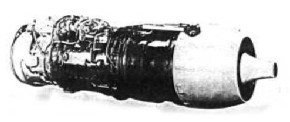
"BMW-003, nozzle view"
-The total production of these engines covered about 3,500 units, but there were Me-262s waiting for the engine dilivery rate, even with the effort of Junkers with their Jumo-004, which went hand in hand with the BMW-003 but with a little more power.
-The BMW-003-C was mounted with a more efficient Brown-Boveri compressor, but the -003-D changed to an 8-stage compressor and double turbine.
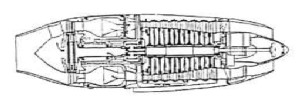
"BMW - F9225"
-The -003 came out thanks to previous projects such as the F-9225, 1939, P3302, or P-3304 that should have been the BMW-002.
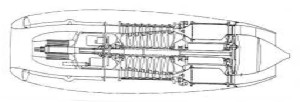
"P-3302"
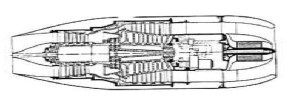
"P-3304"
-After the war they were about to conclude the BMW-018 engine and its BMW-028 turboprop version. The former delivered about 3,400 Kgf of thrust and the latter gave 6,570 CV to the shaft.
-It is a way of saying, for actually there were two shafts for the two contra-rotating propellers, added up.
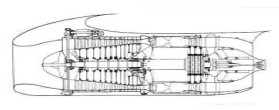
"BMW-018"
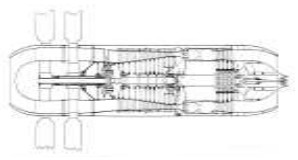
"BMW-028"
-BMW also manufactured rocket engines (parallel with Walter) with liquid fuel and two components: the fuel and oxidant or oxidizer. The engineer in charge of BMW's rocket engine development was Helmuth Zboroski.

"BMW P-3390A"
-The rocket engine with factory reference HP-3390A received the official German specification "109-510A" and was still in development towards the end of WWII.
-Sometimes the name 109-510A was simply referred to as "510A".

"BMW 109-510A"
-The 510A used the following fuels: "M-Stoff" and "SV-Stoff". Same as 511.
-The 548, “R-Stoff and “SV-Stoff”, same as 558.
-During WWII they made liquid fuel rocket engines like the 109-548 mentioned in the main text, but without picture. Now we have an example, which was installed in a kind of aerial torpedo to provide more momentum and reach.
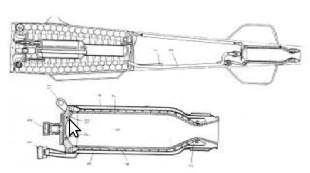
"Engine and fuel system"
-The 708 and 718 used "T-Stoff &" S-Stoff ". In all these cases, the former is the fuel and the latter the oxidizer.
-To clarify each component that was used by the Germans in their rockets, we have the following list:
- “A-Stoff” is Flüssiger Sauerstoff. (hydrogen peroxide).
- “B-Stoff”, hydrazines based catalyst.
- “Br-Stoff”, gasoline and benzine.
- “C-Stoff”, mixture of 30% of hydrazine hydrate, 17% of methanol and 13% of water.
- “M-Stoff”, (Popularly called "Mell"), it was methane, used with nitric acid as oxidizing agent.
- “R-Stoff”, (Popularly called "Tonka"), is a mixture of triethylamine xylidine and 50% (found searching with another fuel, "Tupertina"). With nitric acid is self-igniting.
- “S-Stoff”, (“Salbei”) was concentrated nitric acid.
- “T-Stoff”, (“Ingolin”) with 20% water (H2O) and 80% hydrogen peroxide (H2O2).
- “Z-Stoff”, catalyst for T-Stoff.
- "Visole" was the name of a hypergol from G. Farben industry.
-There were other rocket engines such as numbers 708 and 718, the latter had the factory indication P-3395.
-In the 718, T fuel was introduced into the combustion chamber by a pump at the upper part of the engine and the S fuel through the lower pump. After passing through the turbopumps, their gases are added to the thrust in the running direction.

“BMW-718”
-It is precisely the 718 that is coupled to the BMW-003 turbine to form the BMW-003R drive unit that was intended to be installed in the Arado 234V16 to assist takeoff, and climbing during night hunting.
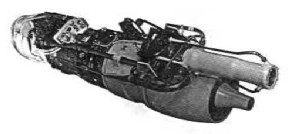
"BMW-003R"

"BMW-003R"
-The BMW 109-558 engine was used (alternately with Walter 109-729) in the Henschel Hs -117 "Schmetterling" missile.
-The BMW engine gave better results when using R and SV "Stoff", ie, "Tonka and Salbei" instead of peroxide that the Walter used.

"BMW-558"
-In both diagrams for the 718 and 558 engines we see how the fuel circulates around chamber and nozzle in the former and only in the nozzle -laval type- in the latter, to cool them precisely.
-Let's first see the the “Schmetterling” diagram.

"Schmetterling"
-The BMW-558 is mounted in the tail, fed by two pressure tanks. The thrust provided by this engine is 375 Kgf. For takeoff it uses two Schmidding 109-553 solid rocket boosters that use Diglycol. The thrust of each of these is 1,750 Kgf.
-After the war, all Allies took advantage of these experiences, both projects and requisitioned material, including technical personnel. After the postwar calm they reactivated their aeronautical activities, and in 1957 appeared the "BMW Studiengesellshaft für Tribwerkbau GmBH" and a subsidiary, "BMW Tribwerkbau GmBH". (By 1960, MAN acquires 50%).
-They built Lycoming GO-480 engines under license for the Dornier Do-27 and the Piaggio P-149D for short-field and training respectively.
-They also repair and overhaul the Canadian Orenda engines from the Sabres of the new Luftwaffe.
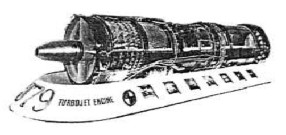
"J-79"
-Later they built under license and with the collaboration of Belgian FN and Italy's Fiat the J-79 engines for the F-104G Starfighters built in Europe. This was during the 60's.
-Since 1954, BMW was active in the I+D field and in 1961 at the Paris Air Show they present small turbines with references 6002, 6012, 6012 and 8026. In other words, two series, 6000 and 8000.
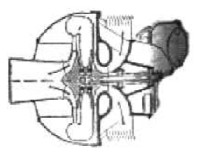
"BMW 6002"
-The 8026 was installed in gliders to transform them into motor gliders, like the H-30-TS.

"Installation on a H-30-TS"
-The thrust of 6002 was 36 Kgf. for a weight of 38 Kgf.
-The idea was to give autonomy for lifting and propulsion enough for traveling. From the 6002 they derived the 8025.

"BMW 6012-L"
-The 6012A was a basic version.
-The B-1 was a reduced power version.
-The B-2 was a small 25 CV auxiliary turbine.
-The shown L model has a manual start to relaunch the rotor shaft. Excess of air could be used as an air generator.
-And now, the BMW 6012 turbine engine exhibited at the Museum of Munich. It has no gearbox for accessories.
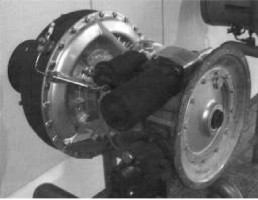
"BMW 6012, in Munich"
-It is intended to be used as APU, delivering 81 CV to drive accessories and also air flow of 0.565 kg / sec. to 2.5 bar pressure.
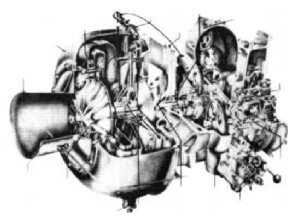
"BMW 6012 cutaway"

"6022"
Go to BMW part 2
Engines of BMW Part 1
Model: 003 (109-003 y P-3302)

"BMW-003, nozzle details"
Model: 003R (P-109-003R)
Model: 109-002 (P-3304)(Bramo)
Model: 109-003 (P-3302)

"BMW-003R"
Model: 109-018

"BMW-018"
Model: 109-028
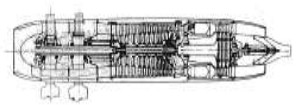
"BMW - 109-028" (PeT)
Model: 109-510A (P-3390A)

"BMW 109-510A"
Model: 109-511
Model: 109-528
Model: 109-548
Model: 109-558

"BMW-558"
Model: 109-708
Model: 109-718 (P-3395)

"BMW-718"
Model: 112 (no info)
Model: 114 (Lanova)

"BMW-Lanova"
Model: 116 (12V, invertido)

"BMW 116"
Model: 117 (No info)
Model: 132 (9 cils. radial)

"BMW 132"
Model: 132a id.
Model: 132K id.
Model: 139
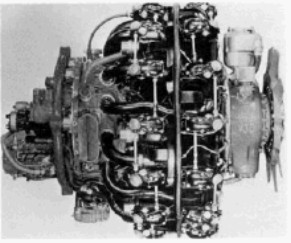
"BMW-139"
Model: 314E

"Bramo Sh-14A"
Model: 322
Model: 323 (Base Jupiter)

"BMW-323"
Model: 323P (1000 CV)
Model: 323R-2 (14 cils)

"BMW 323R-2"
Model: 325
Model: 329 Doble Fafnir, 14 cils.
Model: 6002
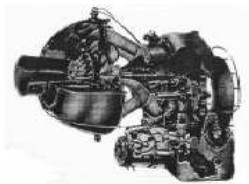
"BMW 6002"
Model: 6011 (MTU 6011)
Model: 6012 (MTU 6012)

"BMW 6012, in Munich"
Model: 6022

"BMW 6022"
Model: 801

"BMW 801 at the MAE"
Model: 8011
Model: 802
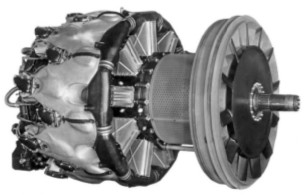
"BMW 802"
Model: 8022
Model: 8025
Model: 8026
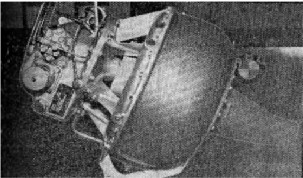
"BMW - 8026"
Model: 803
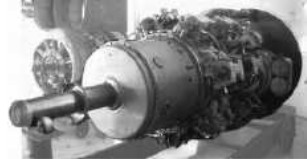
"BMW-803"
Model: 804 (No info)
Model: 805 (No info)
Model: BR-700TP
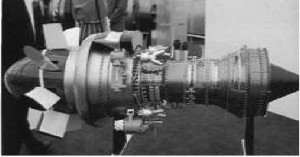
"BMW - BR700-TP, scale model"
Model: BR-715

"BMW - BR-715"
Model: BR-720
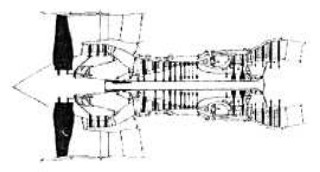
"BMW - BR-720"
Model: F-9225

"BMW - F9225"
Model: I
Model: II
Model: III

"BMW III"
Model: IIIa

"BMW IIIa Fig. 2"
Model: IV

"BMW VI"
Model: IX

"BMW-IX"
Model: Lyc GO-480 under license
Model: M2-B15, boxer
Model: P&W J-79 under license
Model: P-3302 (109-003)

"BMW P-3302"
Model: P-3303
Model: P-3304 (109-002)

"BMW P-3304"
Model: P-3306

"BMW P.3306"
Model: P-3307
Model: P-3390A (109-510A)

"BMW P-3390A"
Model: P-3395 (109-718)
Model: R-100 (conv. motorbike engine)
Model: R-1100B (conv. motorbike engine)
Model: R-1100S (conv. motorbike engine)
Model: R-1150 (conv. motorbike engine)
Model: R-1200 (conv. motorbike engine)
Model: T-117

"BMW - T-117"
Model: V
Model: VI

"BMW VI with gear"
Model: VII

"BMW VII"
Model: VIIa (12V)
Model: VIII

"BMW VIII"
Model: X

"BMW- X"


